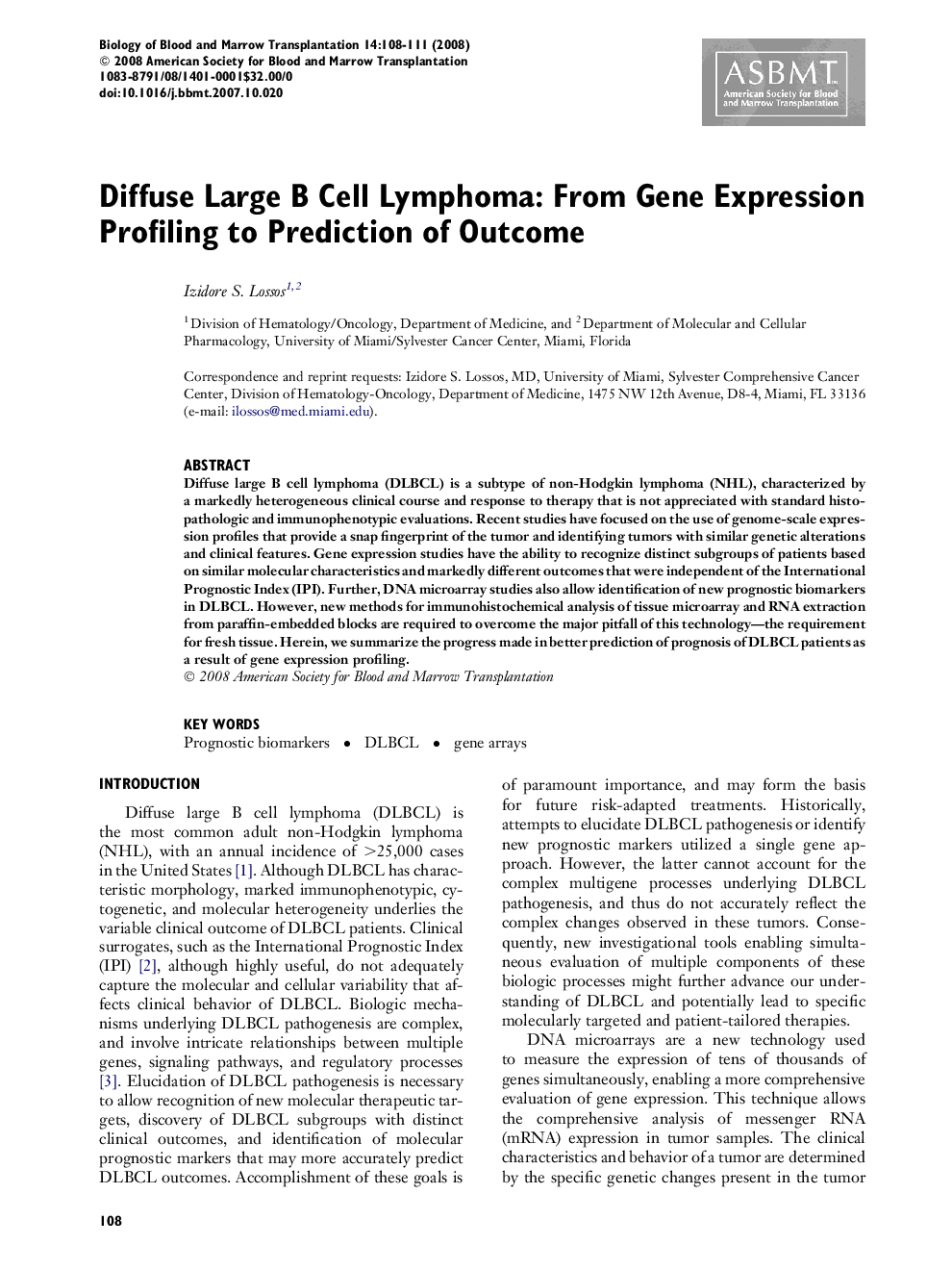| Article ID | Journal | Published Year | Pages | File Type |
|---|---|---|---|---|
| 2104659 | Biology of Blood and Marrow Transplantation | 2008 | 4 Pages |
Diffuse large B cell lymphoma (DLBCL) is a subtype of non-Hodgkin lymphoma (NHL), characterized by a markedly heterogeneous clinical course and response to therapy that is not appreciated with standard histopathologic and immunophenotypic evaluations. Recent studies have focused on the use of genome-scale expression profiles that provide a snap fingerprint of the tumor and identifying tumors with similar genetic alterations and clinical features. Gene expression studies have the ability to recognize distinct subgroups of patients based on similar molecular characteristics and markedly different outcomes that were independent of the International Prognostic Index (IPI). Further, DNA microarray studies also allow identification of new prognostic biomarkers in DLBCL. However, new methods for immunohistochemical analysis of tissue microarray and RNA extraction from paraffin-embedded blocks are required to overcome the major pitfall of this technology—the requirement for fresh tissue. Herein, we summarize the progress made in better prediction of prognosis of DLBCL patients as a result of gene expression profiling.
